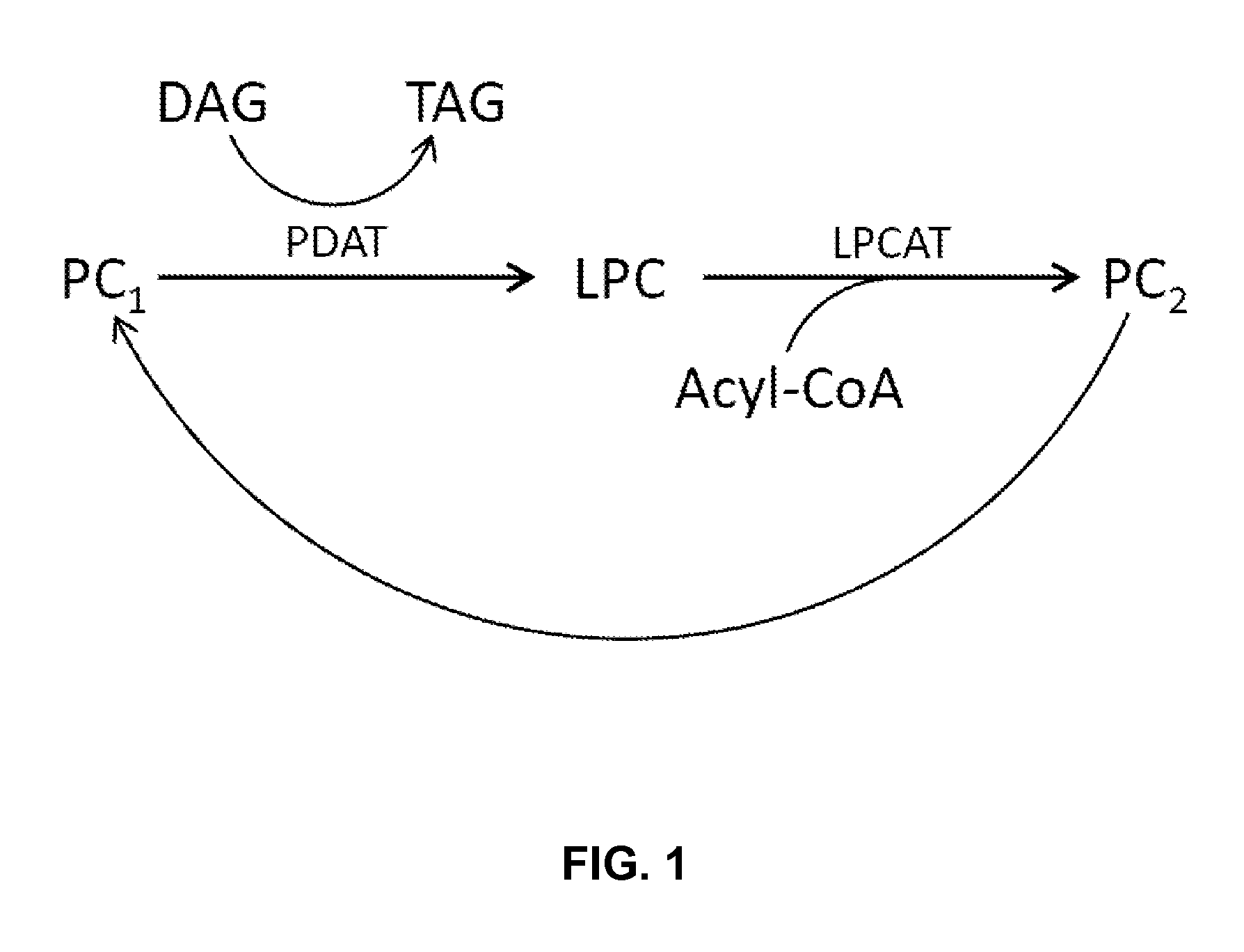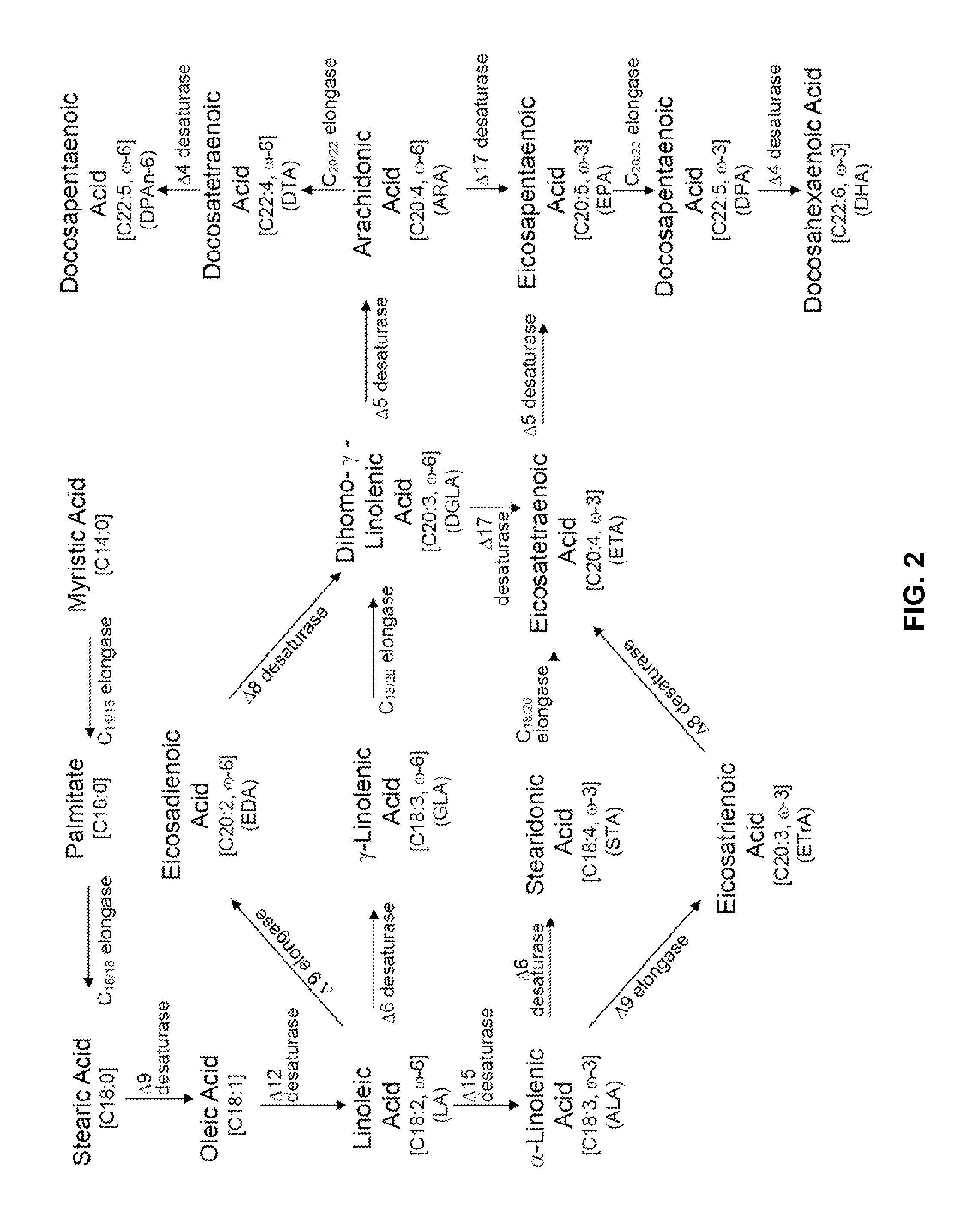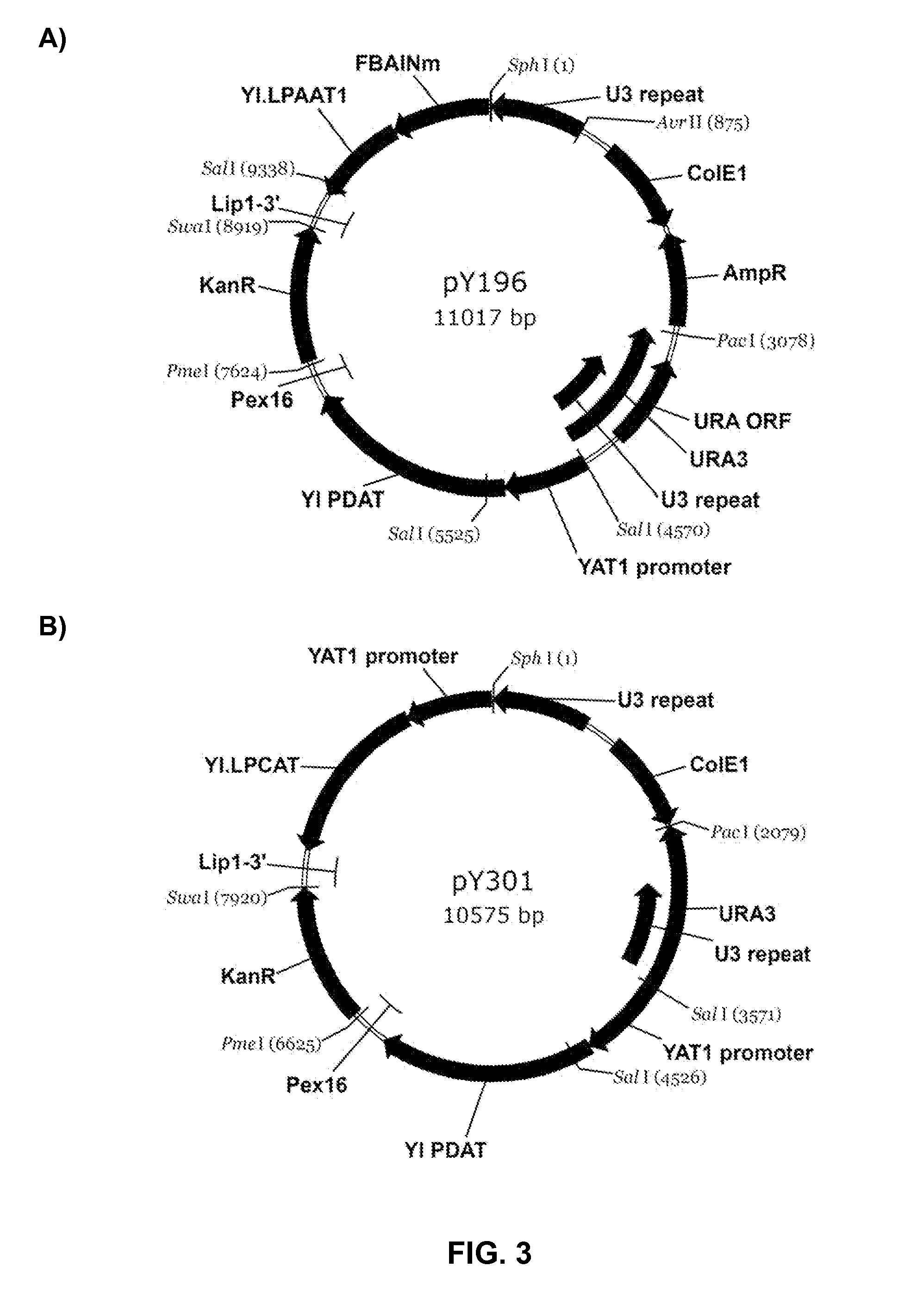PRODUCTION OF POLYUNSATURATED FATTY ACIDS BY COEXPRESSION OF ACYL-CoA:LYSOPHOSPHATIDYLCHOLINE ACYLTRANSFERASES AND PHOSPHOLIPID:DIACYLGLYCEROL ACYLTRANSFERASES
- Summary
- Abstract
- Description
- Claims
- Application Information
AI Technical Summary
Benefits of technology
Problems solved by technology
Method used
Image
Examples
example 1
Isolation of Yarrowia lipolytica LPCAT
[0262]U.S. Pat. Appl. Publ. No. 2010-0317882-A1, incorporated herein by reference, describes the identification of a Y. lipolytica homolog to the Saccharomyces cerevisiae Ale1 (i.e., “ScAlel”; SEQ ID NO:2; GenBank Accession No. NP—014818; U.S. Pat. No. 7,732,155; Intl. Appl. Publ. No. WO 2009 / 001315). This homolog, designated therein as either YIAIeI or YILPCAT (SEQ ID NO:4) and corresponding to ORF YALI0F19514p (GenBank Accession No. XP—505624; Intl. Appl. Publ. No. WO 2009 / 001315) was found to be 45% identical to ScAlel.
[0263]YILPCAT was analyzed to determine the presence or absence of non-plant motifs present in Ale1 homologs, as identified in U.S. Pat. No. 7,732,155 and U.S. Pat. Appl. Publ. No. 2008-0145867-A1, which are herein incorporated by reference. Specifically, these motifs are SEQ ID NOs:8-15 (Table 2). The H is residue in SEQ ID NO:11 (SAxWHG-X2-PGY-X2-[T / F]-F) may be an active site residue within the protein, given studies of othe...
example 2
Co-Expression of PDAT with LPCAT or LPAAT in Yarrowia lipolytica
[0265]The present Example describes overexpression of a Y. lipolytica PDAT (phospholipid:diacylglycerol acyltransferase [EC 2.3.1.158]) with either a Y. lipolytica LPCAT (acyl-CoA:lysophosphatidylcholine acyltransferase [EC 2.3.1.23]) or a Y. lipolytica LPAAT (acyl CoA:lysophosphatidic acid acyltransferase [EC 2.3.1.51]) in a Y. lipolytica strain that had been engineered to produce a high level of lipids containing eicosapentaenoic acid [“EPA”]. Compared to Yarrowia transformants co-expressing PDAT and LPAAT, transformants co-expressing PDAT and LPCAT produced an increased amount of EPA, measured as a weight percent of total fatty acids (EPA % TFAs). Furthermore, PDAT and LPCAT co-expression resulted in an increased C18 to C20 elongation conversion efficiency, measured as increased delta-9 elongase percent conversion efficiency, and an increased amount of total fatty acids, measured as a weight percent of the dry cell ...
example 3
Synthesis of Plasmid pY306-N Comprising Variant YILPCAT
[0276]The present example describes the construction of a Yarrowia autonomously replicating vector comprising a variant YILPCAT sequence (plasmid pY306-N, SEQ ID NO:48). The variant YILPCAT polynucleotide sequence, designated herein as YILPCAT* (SEQ ID NOs:45), lacks two NcoI restriction enzyme sites that are present in the wild type YILPCAT coding region. Removal of these internal NcoI sites facilitated subsequent cloning procedures.
[0277]As a control, the wild type YILPCAT ORF (SEQ ID NO:3; Example 1) was cloned into a Yarrowia autonomously replicating vector to result in plasmid pY306 (SEQ ID NO:47), comprising a ColE1 plasmid origin of replication, an ampicillin-resistance gene, an f1 origin of replication and the Y. lipolytica Ura3 gene (Gen Bank Accession No. AJ306421).
[0278]The variant YILPCAT sequence was synthesized by GenScript Corporation (Piscataway, N.J.). Two internal NcoI restriction sites were removed by creation...
PUM
| Property | Measurement | Unit |
|---|---|---|
| Fraction | aaaaa | aaaaa |
| Fraction | aaaaa | aaaaa |
| Efficiency | aaaaa | aaaaa |
Abstract
Description
Claims
Application Information
 Login to View More
Login to View More - R&D
- Intellectual Property
- Life Sciences
- Materials
- Tech Scout
- Unparalleled Data Quality
- Higher Quality Content
- 60% Fewer Hallucinations
Browse by: Latest US Patents, China's latest patents, Technical Efficacy Thesaurus, Application Domain, Technology Topic, Popular Technical Reports.
© 2025 PatSnap. All rights reserved.Legal|Privacy policy|Modern Slavery Act Transparency Statement|Sitemap|About US| Contact US: help@patsnap.com



